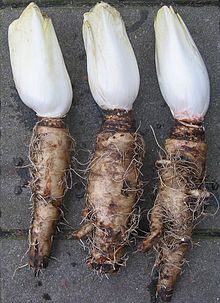Inulin
Important dietary fibre
Many different plant species produce inulin and use it for themselves as an energy reserve. Most inulin can be found in the roots of plants. For humans, inulin is indigestible because the appropriate enzyme for its breakdown is missing, so it does not serve us for energy production. Therefore, it reaches the large intestine undigested and is broken down there by the resident intestinal bacteria through fermentation. Inulin is a so-called dietary fibre. A diet rich in fibre offers advantages for intestinal health, because the “good” intestinal bacteria are “fed” in this way. But inulin can do even more than other dietary fibres; it can stimulate the growth of bifidobacteria.

Inulin as a prebiotic
The combination of probiotics (“good intestinal bacteria”) and prebiotics (their “food”, e.g. inulin) are called synbiotics. With such a combination, the body is thus supplied with bacteria that are helpful for the body and at the same time with dietary fibres on which they live.